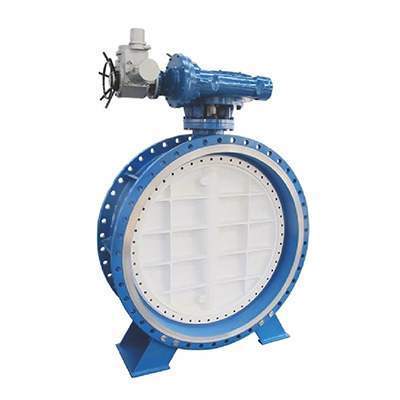Welcome to My Blog!
Before we dive into the content, I’d love for you to join me on my social media platforms where I share more insights, engage with the community, and post updates. Here’s how you can connect with me:
Facebook:https://www.facebook.com/profile.php?id=61563865935136
Now, let’s get started on our journey together. I hope you find the content here insightful, engaging, and valuable.
Introduction

In the world of industrial flow control, selecting the right valve is critical for ensuring efficiency, durability, and safety. Stainless steel butterfly valves have emerged as a preferred choice across various industries due to their robust design and versatile functionality. These valves, known for their compact structure and reliable performance, are widely used in applications ranging from water treatment to chemical processing. This blog explores the numerous advantages of using stainless steel butterfly valves, delving into their unique properties, applications, and long-term benefits. Whether you’re an engineer, facility manager, or procurement specialist, understanding these benefits can help you make informed decisions for your systems.
Why Choose Stainless Steel for Butterfly Valves?
Stainless steel is a material renowned for its strength and resistance to corrosion, making it an ideal choice for butterfly valves. The alloy’s composition, which includes chromium and nickel, provides a protective layer that shields the valve from rust and degradation, even in harsh environments. This durability ensures that stainless steel butterfly valves maintain their integrity over extended periods, reducing the need for frequent replacements. Additionally, stainless steel’s non-reactive nature makes it suitable for handling a wide range of fluids, from potable water to aggressive chemicals, without compromising the valve’s performance or the fluid’s quality.
Corrosion Resistance in Harsh Environments
One of the standout features of stainless steel butterfly valves is their exceptional corrosion resistance. In industries such as marine, oil and gas, or chemical processing, valves are often exposed to corrosive substances like saltwater, acids, or high humidity. Stainless steel’s ability to withstand these conditions ensures that the valves remain functional and reliable, minimizing downtime and maintenance costs. This property is particularly valuable in applications where exposure to moisture or chemicals is unavoidable, ensuring long-term operational efficiency.
Durability and Longevity
The robust nature of stainless steel contributes to the longevity of butterfly valves. Unlike other materials that may degrade over time, stainless steel butterfly valves are built to last, even under high-pressure or high-temperature conditions. This durability translates to lower lifecycle costs, as the valves require less frequent maintenance or replacement. For industries aiming to optimize operational budgets, the long service life of these valves is a significant advantage.
Versatility in Applications for Stainless Steel Butterfly Valves
Stainless steel butterfly valves are highly versatile, making them suitable for a wide range of industries and applications. From water treatment plants to food and beverage processing, these valves can handle diverse fluids and operating conditions. Their compact design allows for easy integration into systems with limited space, while their ability to regulate flow efficiently makes them ideal for both on/off and throttling applications.
Applications in Water Treatment
In water treatment facilities, stainless steel butterfly valves play a crucial role in managing the flow of water through various stages of purification. Their corrosion-resistant properties ensure they can handle treated and untreated water without degrading, while their tight sealing capabilities prevent leaks that could compromise system efficiency. These valves are also easy to clean, making them compliant with stringent hygiene standards in water management.
Use in Chemical Processing
Chemical processing plants often deal with aggressive fluids that can erode standard valves. Stainless steel butterfly valves, with their resistance to chemical corrosion, are well-suited for such environments. They can manage the flow of acids, alkalis, and other reactive substances without suffering damage, ensuring safe and reliable operations in demanding settings.
Cost-Effectiveness of Stainless Steel Butterfly Valves
While the initial cost of stainless steel butterfly valves may be higher than alternatives made from materials like cast iron or PVC, their long-term cost-effectiveness is undeniable. The combination of durability, low maintenance, and versatility reduces overall operational expenses. By investing in these valves, businesses can avoid frequent repairs, replacements, and system downtime, leading to significant savings over time.
Low Maintenance Requirements
Stainless steel butterfly valves require minimal maintenance due to their robust construction and resistance to wear. Unlike valves made from less durable materials, they are less prone to issues like rust, scaling, or cracking. This reduces the need for regular inspections and repairs, allowing operators to focus on other critical aspects of their systems.
Energy Efficiency in Operation
The streamlined design of stainless steel butterfly valves contributes to their energy efficiency. Their quarter-turn operation requires less force to open or close, reducing the energy needed for actuation. This is particularly beneficial in automated systems where energy consumption is a key consideration, helping facilities lower their operational costs.
Technical Specifications of Stainless Steel Butterfly Valves
To provide a clearer understanding of the capabilities of stainless steel butterfly valves, the following table outlines their typical technical specifications. These specifications highlight why these valves are a reliable choice for various industrial applications.
| Feature | Description |
|---|---|
| Material | Stainless steel (e.g., 304, 316) for corrosion resistance and durability |
| Size Range | 2 inches to 48 inches, depending on application |
| Pressure Rating | Up to 150 psi for standard applications, higher for specialized designs |
| Temperature Range | -20°F to 450°F, suitable for a wide range of operating conditions |
| Connection Types | Wafer, lug, or flanged for easy installation |
| Actuation Options | Manual (lever/gear), pneumatic, or electric for automated systems |
| Sealing Material | EPDM, PTFE, or Viton for compatibility with various fluids |
This table illustrates the adaptability of stainless steel butterfly valves, making them suitable for diverse operational requirements. Their range of sizes, pressure ratings, and connection types ensures compatibility with most industrial systems.
Ease of Installation and Operation
Stainless steel butterfly valves are designed for simplicity, both in terms of installation and operation. Their lightweight and compact design makes them easier to install compared to bulkier valve types like gate or globe valves. Additionally, their quarter-turn mechanism allows for quick and precise flow control, reducing operator fatigue and improving system responsiveness.
Compact Design for Space-Constrained Systems
In facilities where space is at a premium, the compact nature of stainless steel butterfly valves is a significant advantage. Their slim profile allows them to fit into tight spaces without compromising performance. This makes them ideal for retrofitting existing systems or designing new ones with space constraints.
Quick and Precise Flow Control
The quarter-turn operation of stainless steel butterfly valves enables rapid opening and closing, providing precise control over fluid flow. This is particularly useful in applications requiring frequent adjustments, such as in HVAC systems or industrial processes where flow rates need to be fine-tuned.
Environmental Benefits of Stainless Steel Butterfly Valves
Sustainability is a growing concern in industrial operations, and stainless steel butterfly valves contribute to environmentally friendly practices. Stainless steel is fully recyclable, reducing the environmental impact of valve production and disposal. Additionally, their energy-efficient operation and long lifespan minimize resource consumption over time.
Recyclability and Sustainability
As industries strive to meet sustainability goals, the recyclability of stainless steel butterfly valves is a key benefit. At the end of their service life, these valves can be recycled without loss of material quality, supporting a circular economy. This aligns with global efforts to reduce waste and conserve resources.
Reduced Carbon Footprint
The energy efficiency of stainless steel butterfly valves, combined with their durability, contributes to a reduced carbon footprint. By minimizing the need for frequent replacements and reducing energy consumption during operation, these valves help industries lower their environmental impact.
Safety and Reliability in Critical Applications
In industries where safety is paramount, such as oil and gas or pharmaceuticals, stainless steel butterfly valves offer unmatched reliability. Their robust construction ensures they can withstand extreme conditions without failing, while their tight sealing prevents leaks that could pose safety hazards. This reliability is critical for maintaining safe and efficient operations.
Compliance with Industry Standards
Stainless steel butterfly valves are designed to meet stringent industry standards, such as API, ANSI, and ISO certifications. This ensures they are suitable for use in regulated industries, providing peace of mind for operators and engineers. Compliance with these standards also guarantees consistent performance across various applications.
Leak-Proof Performance
The sealing mechanism of stainless steel butterfly valves ensures a tight shut-off, preventing leaks that could lead to product loss or environmental contamination. This is particularly important in industries handling hazardous materials, where even minor leaks can have significant consequences.
Maintenance and Troubleshooting Tips

To maximize the lifespan and performance of stainless steel butterfly valves, regular maintenance and proper troubleshooting are essential. While these valves are low-maintenance, periodic inspections can help identify potential issues before they escalate. Common maintenance tasks include checking for wear on seals, ensuring proper lubrication, and verifying actuator functionality.
Routine Inspection Guidelines
Operators should conduct routine inspections to ensure stainless steel butterfly valves are functioning optimally. This includes checking for signs of corrosion, inspecting seals for wear, and testing the valve’s operation to ensure smooth performance. Regular maintenance schedules can help extend the valve’s service life.
Common Issues and Solutions
While stainless steel butterfly valves are highly reliable, issues such as sticking or leaks may occasionally arise. Sticking can often be resolved by lubricating the valve stem, while leaks may require replacing worn seals. Consulting the manufacturer’s guidelines can provide specific troubleshooting steps tailored to the valve model.
Conclusion
Stainless steel butterfly valves offer a compelling combination of durability, versatility, and cost-effectiveness, making them an ideal choice for a wide range of industrial applications. Their corrosion resistance, ease of operation, and environmental benefits ensure they meet the demands of modern industries while delivering long-term value. By choosing these valves, businesses can enhance operational efficiency, reduce maintenance costs, and contribute to sustainable practices. Ready to upgrade your flow control systems? Contact us today to explore our range of high-quality stainless steel butterfly valves and find the perfect solution for your needs.
FAQ
What are stainless steel butterfly valves used for?
Stainless steel butterfly valves are used to regulate or isolate the flow of liquids and gases in industries such as water treatment, chemical processing, food and beverage, and HVAC systems. Their versatility makes them suitable for both on/off and throttling applications.
How do stainless steel butterfly valves compare to other valve types?
Compared to gate or ball valves, stainless steel butterfly valves are more compact, easier to install, and require less force to operate. Their corrosion resistance and durability make them a preferred choice for harsh environments.
Are stainless steel butterfly valves suitable for high-temperature applications?
Yes, stainless steel butterfly valves can handle a wide range of temperatures, typically from -20°F to 450°F, depending on the specific design and sealing materials used. Always consult the manufacturer’s specifications for exact temperature ratings.
